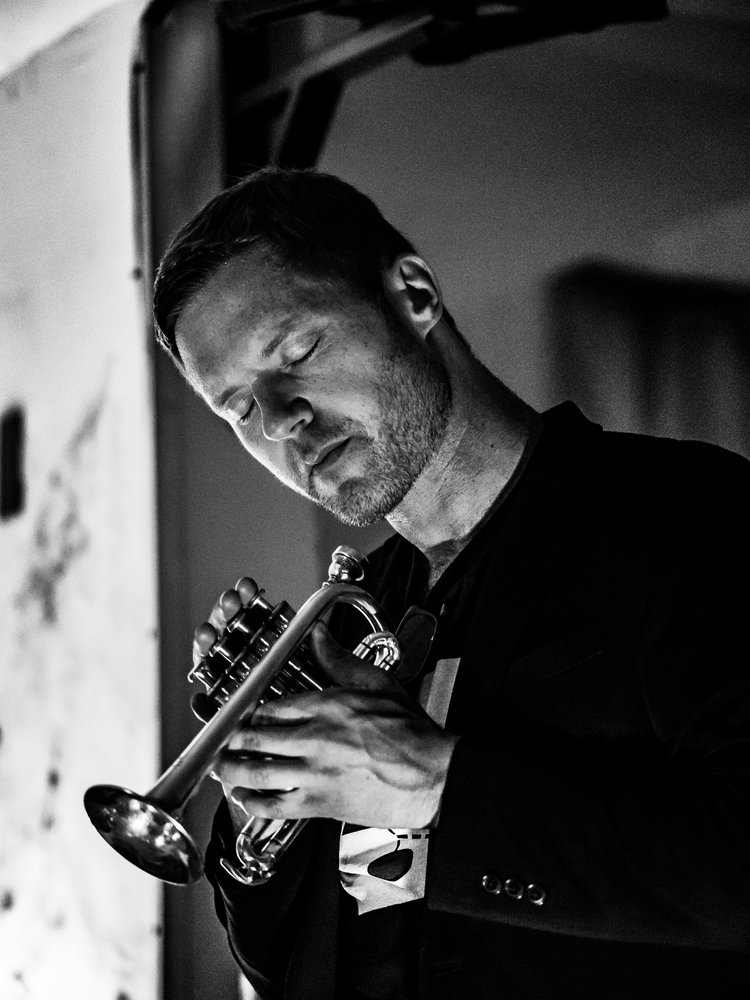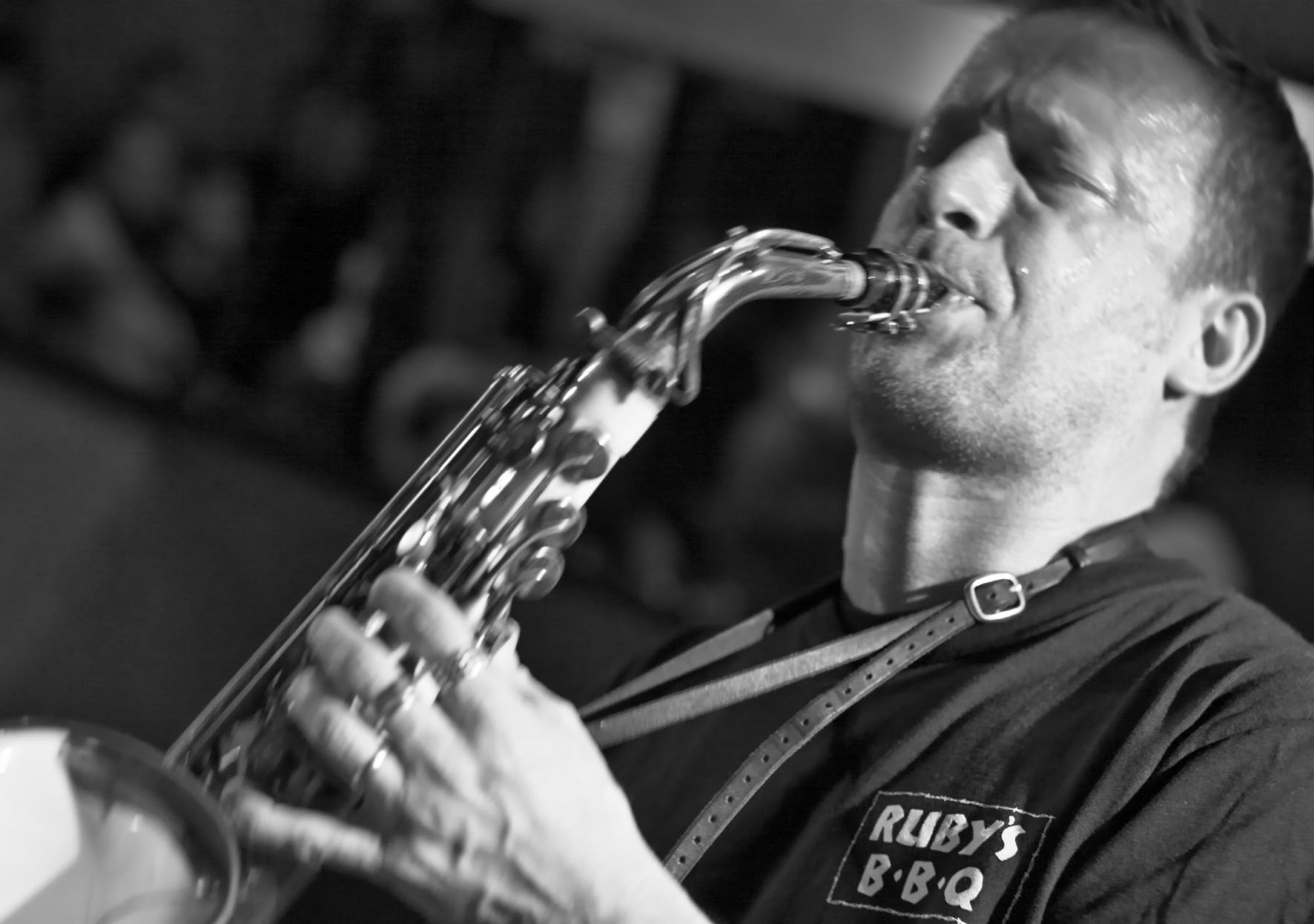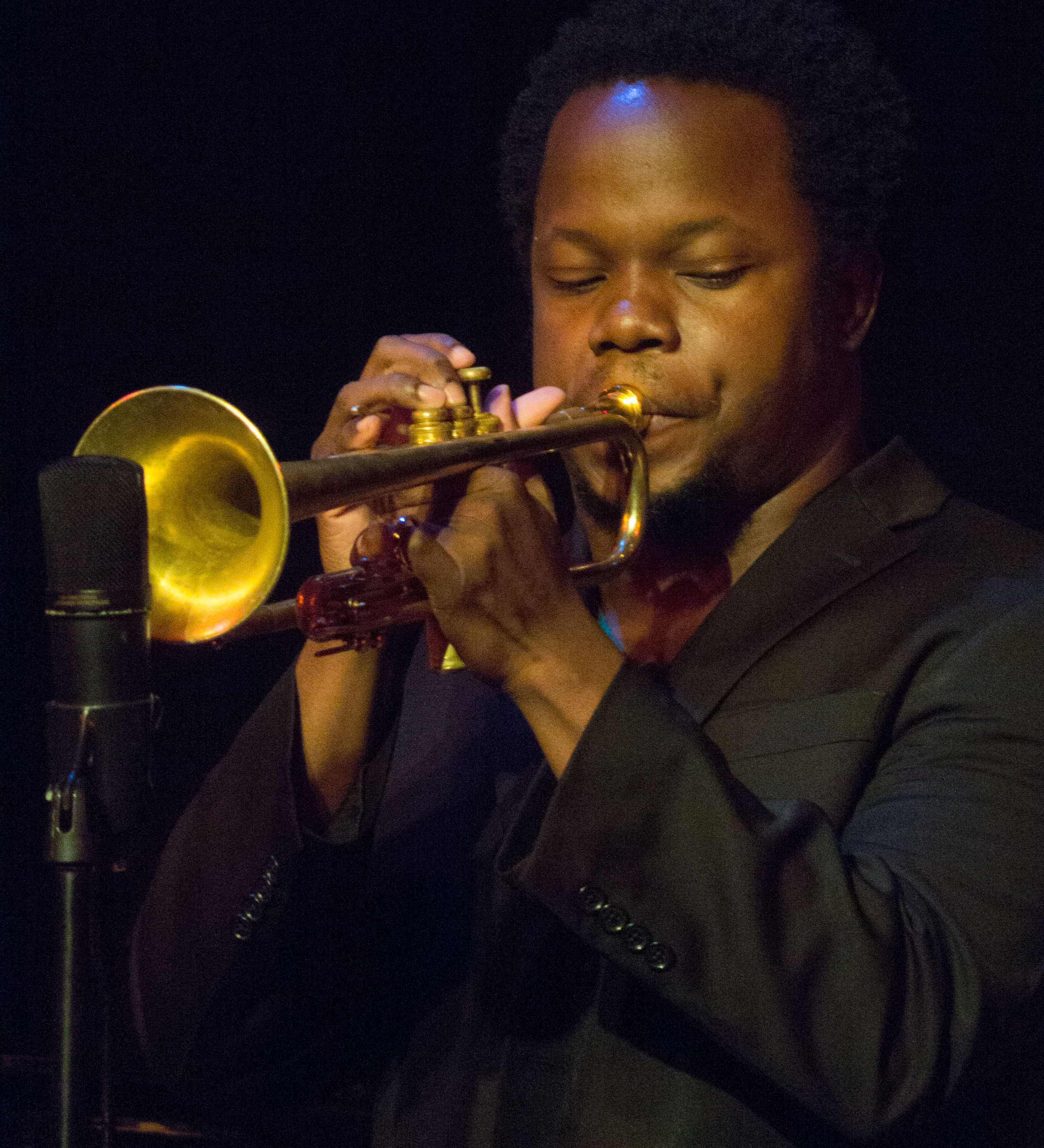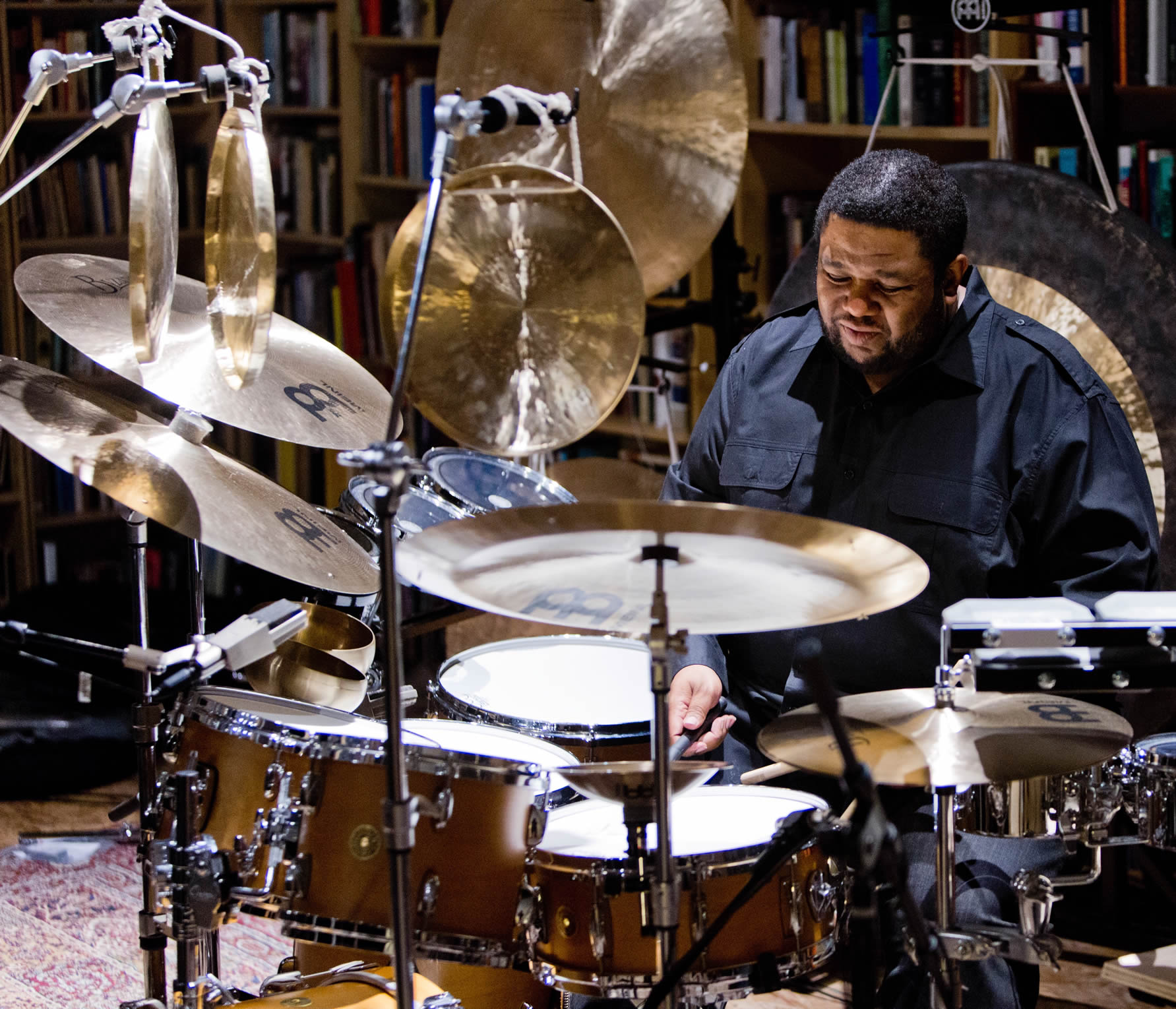I rarely speak about chord changes, or even harmony in general, among my musician peers and friends. I don’t give my bandmates directions or suggestions about how to relate harmonically to each other, or to my composed material. For me it is a personal matter, and having wildly different approaches to harmony within an ensemble does not preclude us from working well together. On the contrary, I believe having such differences makes for interesting music.
I have found that in improvisation the paths for interaction can differ, or even in some cases be totally unidirectional, without diminishing the effect of the performance or recording. In other words, when three people are improvising, one person can be relating to the action mostly harmonically, while another is relating mostly timbrally, and the third is relating to the others in terms of energy. Of course many improvisers are adept at relating to several or all of these parameters, but it seems we each have our own foci. There are also several examples of records I can think of in which improvisation was overdubbed after the other musicians had laid something down. In those cases, the improvisers on the original track clearly don’t have the opportunity to react (harmonically or otherwise) to the overdubbing improviser. John Zorn’s Cobra recording, released on Tzadik, is one example of this—Derek Bailey overdubbed on a few tracks after all the other musicians recorded. Tyshawn Sorey’s recent series of fantastic albums, Pillars, is another one. Yet in both cases, I would not have been able to perceive the unidirectionality of the work had I not been told about it. This undermines or at least calls into question the common belief that spontaneous and sensitive interaction between performers in real time is the only way to achieve good improvisation.
Given my own relationship with harmony, I was curious about how others approach this issue in their music. How have they dealt with the idea of harmonic change over time ? Was it different from my approach ? I started conversations with a few musicians by asking them about this specific facet of music-making—harmonic change over time. Then, apropos of the title of this issue, I asked if their approach has anything to do with the idea of changes (that is, chord changes) in jazz.

Peter Evans
CP Do you see the harmonic structure of your music as being at all related to chord changes in jazz ? If so, how ? Or, more generally, how do you think of harmonic changes in your music over time, if that is a consideration at all ?
PE To be honest the question is a little frustrating, man ! Like, there are shitloads of music I’ve played and released where moving harmony, chord changes, “jazz”-related harmonic structures are right at the center of the action ! So the answer for you is simply “yes,” [laughs] . . . but that doesn’t make for a very good interview.
I use harmony in different ways—sometimes the sound of rapidly changing colors as a track for improvisation appeals to me a lot, either packaged in a cyclic form or in a more open-ended way. I explore those sounds in both solo playing (“Inner Urge” and “Epimethean Man” from my recent solo record The Veil are good examples) and stuff I write for my groups (lots of examples, obviously the pieces based on standards like “All” or “1 to 92”). I’m also attracted to modal music, fixing the colors in place and moving around that universe. Lots of music works like that, of course, and I find it really engaging. (“Intergalactic” from Genesis is a good example of that in a group setting.)
In general, I am pretty attentive to pitch and the atmosphere various collections of notes create, and then of course it’s another thing to think about the atmosphere itself changing, either rapid fire or more slowly. I definitely cut my teeth learning to navigate moving harmony on a basic level from playing tunes (standards, Joe Henderson/Wayne Shorter tunes, bebop tunes), and I still practice that material all the time. I feel that if one is going to learn how to improvise with small motifs, shapes of notes, and move them with freedom and control around the instrument, the jazz tradition is a pretty damn good place to hone that skill. I have tried to impress this upon classical musicians who are getting their feet wet with improvising, in workshops and classes. Sometimes they tell me they are intimidated by that aspect of jazz improvisation and I usually respond by saying that they should be ! [laughs] It’s a difficult thing to learn and work on, but super valuable, whether or not a player wants to actually perform that material.
CP Clearly being able to move with freedom and control around your instrument harmonically and melodically, and virtuosity in general, are integral parts of your music. Timbre is also a major concern. Does your engagement in and knowledge of harmonic structure inform your approach to structure in the timbral materials of your music ? If so, how ?
PE I really try, as much as possible, to look at all these parameters as connected, interpenetrative, and modulatory. It’s a very dry approach but the one Xenakis articulates in Formalized Music influenced my thinking and reaffirmed things I was already kind of grasping for in terms of conceptualizing the development of my materials. It’s kind of an electronic music way of thinking about sound, and the more people I talk to who work with a variety of instruments (acoustic and electronic), the more I encounter a similar way of thinking to my own concerning these issues. Basically I’m trying to develop my playing to the point where I can paint with a wide variety of colors, from an austere black square to a giant, busy mural. So it’s not just the amount of tools at my disposal, but the kind of tools—and ones that are flexible and combinatorial suit this approach the best, as far as I can tell so far . . .

Mats Gustafsson
CP Do you see the harmonic structure of your music as being at all related to chord changes in jazz, historically, formally, or otherwise ? If so, how ? Or, more generally, how do you think of harmonic changes in your music over time, if that is a consideration at all ?
MG It has a connection historically, of course. Since everything we do now is connected to the past and the learnings and wisdoms we find along the way. The music I do comes from harmonic structures, but the level of abstracting—it is pretty high sometimes. What I find interesting, and where I find myself digging [in] mostly is in a more simple harmonic structure and pattern, where I find connections between modal free jazz music and similar structures within the alternative garage/punk/rock legacy. This is in general, of course. But there are some very interesting connections to be made there. Some projects I work with have clear harmonic structures and sometimes complex constructions, but most of all I try to deal with other parameters first : melody, energy, color, density, and of course FORM.
We do research all the time as artists, and sometimes the focus is on harmonic parameters and sometimes not at all (but it’s always there . . . in one way or the other . . . ). I use it primarily as a source of inspiration and information these days, but not necessarily as an actual tool in my music. Harmonic structures are more interesting than actual chord changes.
Considerations always have to be made. In music. In life.
CP Can you talk about your preference for simple harmonic structures and patterns ? As an improviser do you find that these structures allow you more freedom and flexibility than more complex structures ? Or does it have more to do with your preference for those sonorities ?
MG It all depends on the musical situation, of course. Complex harmonic systems can provoke interesting frictions and results, but in general terms : I prefer to improvise on simpler harmonic patterns. That allows me more freedom, in the way I hear it anyway. Modal music interests me a lot, as well as drone music, but also free improvised music—and in this case we can always discuss where the harmonies are or where they have gone.
CP And just to clarify : Would you describe how you differentiate between harmonic structures and chord changes ?
MG Chord changes sounds to me like a lot of “jazz”: quick shifts harmonically and a high complexity. Harmonic structures could be anything.
CP You emphasize the importance of form in your previous response. Clearly, different techniques define form. We have named a few of them in this discussion already : color, energy, density, melody, harmony. In the American songbook tradition, in sonata form, in bebop standards, melody and harmony typically dictate form in blocks of information—AABA, ABAC, AAB, etc. Do you find yourself approaching form in a similar way with timbre, color, energy ? In other words, is it possible to say that sometimes timbrally-based music is like playing color changes, density changes, or energy changes rather than chord changes ? Or do you see your music as more continuous and fluid, not separated into more or less discrete conceptual blocks ?
MG Form is all. I like to experiment with various parameters in order to decide the form : to see what parameters create the most friction and beauty. It could be any of these parameters or a combination. But, when I compose I usually never decide the form structure beforehand (i.e. AABA, ABA form, etc.). The content—the compositional ideas—dictate the form. That is the way it has to be. Form can always be changed freely ; I don’t want to lock myself into a corner (or two . . .). But, you find a first skeleton of a form/structure and depending on the material (melodic, rhythmic,
energy/color–wise, and/or harmonically) you need to change things around and redo, rework, the form numerous times.
Freely.
Some compositional work I’ve done has very clear forms—all is set—and other works have very loose ends, or starting points, as part of the basic idea of that specific direction.
It is very hard to generalize here, since I try to work in many different ways : sometimes very openly and sometimes with a very fixed basic thematic/ideological idea.

Ambrose Akinmusire
CP Do you see the harmonic structure of your music as being at all related to chord changes in jazz ? If so, how ? Or, more generally, how do you think of harmonic changes in your music over time, if that is a consideration at all ?
AA When I think of chord changes and/or harmony I focus more on the changes part—movement. Literally, how am I expressing a specific type of movement from point A to point B, as opposed to how these seven notes apply to this chord symbol. In my own music I’ve stopped using generally accepted symbols that express chords. I’m using more melodic content on top of melodic content (linear to vertical) and voicings.
Simply put, I focus more on voice leading (how things are changing and the rate at which they are changing).

Tyshawn Sorey
CP Do you see the harmonic structure of your music as being at all related to chord changes in jazz ? If so, how ? Or, more generally, how do you think of harmonic changes in your music over time, if that is a consideration at all ?
TS Depending on the harmonic language in the music I’m writing and the kind of improviser it is designed for (in the case where improvisation is involved), the answer would be either yes or no. The harmonic structure of some of my pieces engages pantonality—it is informed by “jazz” and (20th-century) “classical” harmony, but the way that I use it is definitely far from typical, and is highly chromatic. This is different, however, from the music I wrote for my quintet in the early 2000s (evidenced on Oblique), which called for alternative investigations of harmony and intervallic relationships in a given sonority. The compositions “Movement” from Alloy and “Movement VI” from Inner Spectrum of Variables are informed by “jazz” harmony to a lesser degree, but these harmonic structures were also informed by the work of Brahms (I’m very heavy into Brahms), Villa-Lobos, Bartók, and Scriabin. Ultimately, I try to deal with harmony in a way that is deeply rooted in my understanding of its use in these compositional practices, but in a way that is rigorous in scope and personal in character . . . there always has to be something there for me to problematize, no matter what music I’m doing or what it’s informed by. The concept of what a chord change typically does in any music or where it leads isn’t really enough for me.
CP When you are improvising on piano, trombone, mallet percussion, or any other pitched instrument, how do you harmonically relate to the other music happening, whether that other material is generated by other improvisers, by composed material, or by other stuff you are improvising ?
TS It’s similar to how I deal with rhythm on a drum set, where I feel like I’m free to play or improvise something explicit in the composed material (to rhythmically define exactly what is there) or go completely against the material (polyrhythmically using time ratios, or free—but still with the sense of clearly expressing the formal, rhythmic, and density “changes,” etc.), but in a way that can still make compositional/logical sense. I treat harmony in a very similar manner when playing piano, trombone, or mallet percussion. Oftentimes however, especially in my trio music (which has pretty much nothing at all to do with jazz harmony), I usually prefer to add to the harmonic material that is already generated . . . to play what isn’t there, so to speak. (I talked about this pitch “avoidance principle” in composing vertically during the seminar when we talked about my string quartet—but that’s another thing that I try to do in real time.)
Summing Up
For me the first thing that comes to mind when I think about chord changes is their blockiness—they function as discrete blocks of information and, in that sense, can work efficiently to juxtapose contrasting information over a short period of time. Akinmusire explained that he conceives of his music more in terms of voice leading, which can have the effect of smoothing over the bumps between these blocks of information. Apart from the information itself that is contained within each of those blocks, the rate of change, or harmonic rhythm, can be a defining feature of a piece. One thing that came up in Gustafsson’s answers and resurfaced in my discussion with Sorey is the idea that the structural nature of chord changes—that very blockiness—can be referenced, but instead of filling up the space they create with harmonic information, we can use another type of information like density, timbre, amplitude, noisiness, etc. Sorey brings up “density changes,” and in the interview with Gustafsson I brought up the idea of “color changes,” among other things. Of course in modal music the block remains the same for a long period of time—and then we can start to think about modes of density and modes of color.
What surprised me about the responses was how different they were from each other and from my own thoughts on the topic. It is no surprise that the relevance of a common practice, in terms of the shared way of approaching jazz harmony that was dominant in bebop, has diminished as people find increasingly personal ways of doing things. But I am still impressed by the fact that five musicians working in the same milieu (broadly speaking) have almost no similarities in how they see themselves relating to harmony.
It also should be noted that several of these musicians have worked with each other, and the difference in their ideas doesn’t seem to have inhibited their ability to make good music together. Evans and Gustafsson, for instance, have at least four albums with each other, and yet the way they describe their relationship to harmony differs completely. Gustafsson, who has been noted in Wikipedia for his “tonal belligerence,” identifies other things like color and energy as far more important than harmony. He gravitates towards simple harmonic forms or no forms at all in his music, because it maximizes freedom. Evans, on the other hand, views chord changes and shifting harmony in general as central to much of his work. Of course, this begs the question of how these two improvise together if they differ so much in terms of one of the fundamental elements of music.
In the end, I believe the diversity of responses is a testament to Ornette Coleman’s prescience, or influence, or both. (Coleman’s ideologies are fresh on my mind since I wrote another article about him for this issue.) He called for each member of his band or ensemble to engage with the material according to his or her own concept—he didn’t want a bunch of Ornettes in his band. The ability to make music with others who have drastically different approaches is certainly one of the great joys of music-making.